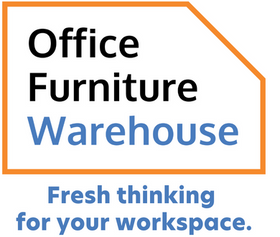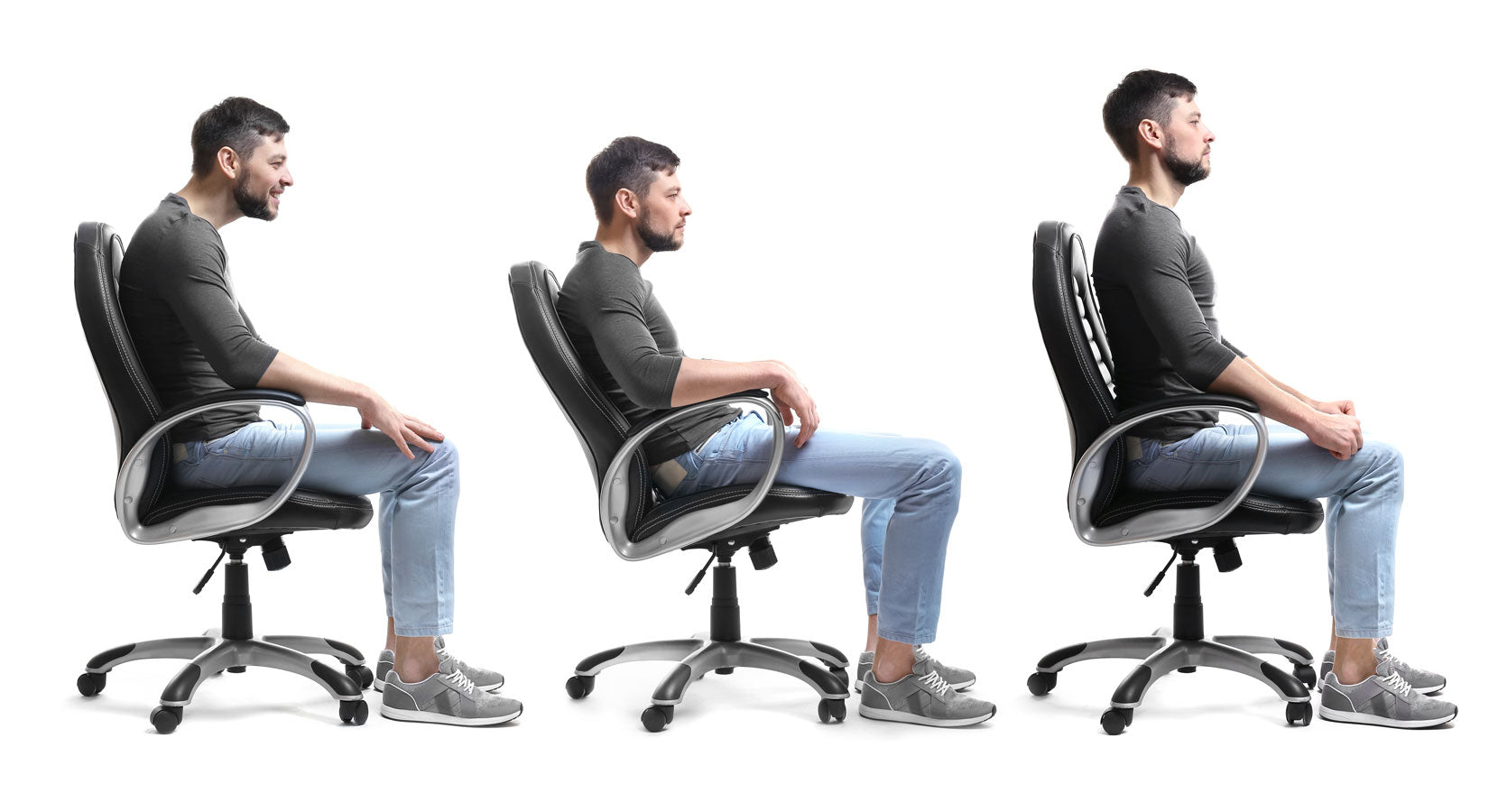Here at OFW we’re huge advocates of getting the right furniture for maximum productivity. And for those of us who sit down for most of the day, this is even more important as incorrect posture and the wrong chair can create back and neck problems in future.
So what’s the best way to sit when you’re working at your desk?
- Ensure that both feet are flat on the floor when sitting on your chair. This helps distribute your weight and balance the body. If you are short or your desk is set up so you can’t reach the ground, consider using a footrest.
- Ensure that your knee and hip joints are at right angles. If your knees are at a level higher than your hips, this will result in your back rounding up. Always have your knees a little lower or at the same level as your hips to prevent slouching or sliding.
- Ensure the upper and lower back is supported with your chair’s backrest.
- To elongate your spine, sit tall and upright. Also, to help maintain the natural curves of the spine, ensure your back and neck are comfortably straight and your shoulders are down, back and relaxed.
One thing to investigate with your current setup is whether your chair supports the lumbar curve, which is the curve of your lower back. If it doesn’t, place a small pillow (or rolled towel) between your back and the chair’s back at your beltline level to keep the curve in its natural position.
Are all three normal back curves present while you’re sitting? Not sure? Check by slipping your hand in the space between your lower back and the chair. When sitting in an office chair, a good lumbar back support should be flush against the small of the back. Many portable lumbar back supports are shaped specifically so that one end should be positioned up and the other down. When placed correctly, a lumbar back support should provide the following benefits:
- Ears, shoulders, and pelvis (hips) are kept in alignment.
- Natural inward curvature of the lower spine is maintained.
It is important that the back be flush, because this provides the support for the lower back. Overall, the lumbar back support should keep the spine in a very natural position. It should not overly accentuate the inward curve, nor should it feel unsupported.
There are a number of ergonomic chairs that are designed to support your back. To test if the ergonomic chair fits well, sit up straight, with the head, spine, and hips in alignment. Then sit all the way back against the seatback. The curve of the ergonomic chair should naturally follow the curve of the lower back.
Some tips to maintain good posture and support for your lumbar spine:
- Evenly distribute your body weight and tilt your pelvis forward.
- Keep your legs uncrossed to assist your circulation and balance your body.
- If your chair has arm rests, keep your elbows and forearms by the side of the body, parallel to the ground on the chair. Ensure that if you must lift your shoulders it’s only slightly.
- Ensure your head is in line with your body (not slumped). Keep your chin in and your ears directly over the shoulders, to prevent neck strain.
- And finally - relax! When your posture is correct, you don’t need to use as many muscles, so enjoy this more relaxed state as a better way to start your day.
So there you have it. If your current chair or desk set up is not working well for you, or if you need some advice on how to choose a chair that supports your back better, get in touch with our team today!


